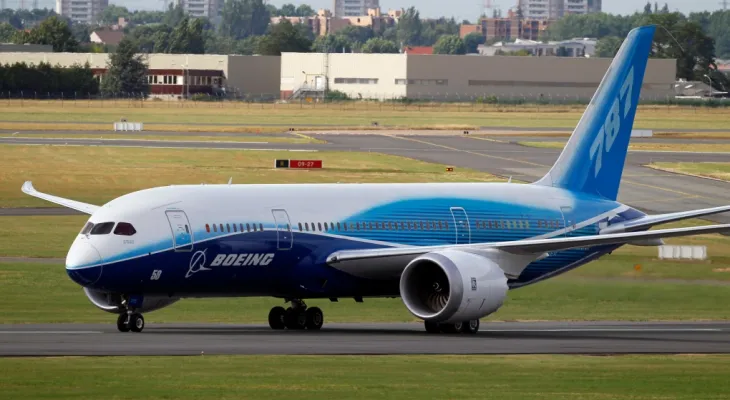Search here
Newspaper
Search here

Arab Canada News
News

Published: August 21, 2024
U.S. federal safety officials are demanding inspections of cockpit seats on Boeing 787 Dreamliner aircraft after one plane landed when the captain's seat unexpectedly shifted forward and disconnected the aircraft's autopilot system.
Boeing has also suspended test flights of a new version of its 777 jet after discovering a damaged structural component between the engine and the rest of the plane. The new model has not yet been approved by regulatory authorities.
The Federal Aviation Administration said in an order scheduled for release on Wednesday that it will require operators of 787 aircraft to inspect the pilots' seats for missing or cracked covers that conceal a switch used to move the seats.
During a Latam Airlines flight in March, the captain’s seat moved forward and struck the autopilot disconnect switch. The plane, which was flying from Australia to New Zealand, descended rapidly about 400 feet (120 meters) before the first officer regained control, according to a preliminary report from Chilean authorities. Dozens of passengers were injured, according to news reports.
Within days of the incident, Boeing advised airlines to inspect cockpit seats on 787 aircraft for loose covers on switches and told them how to disable power to the powered seats.
The Federal Aviation Administration said it received four additional reports from Boeing about cockpit seats moving when it wasn't intended, including a report in June.
The Federal Aviation Administration noted that its safety order will affect 158 planes registered in the United States.
Separately, the Federal Aviation Administration issued a final rule requiring airlines to inspect the inlets around the channels in the engine ice protection systems on 787 aircraft for signs of heat damage. The agency proposed the rule in February after a report about damage to the engine's multiple "inlets" due to missing or "degraded" seals around the channels.
Boeing identified the inlet issue in bulletins sent to airlines last year.
Meanwhile, Boeing has faced a setback in its efforts to win Federal Aviation Administration certification for the 777-9, a new long-range addition to the 777 family. The aircraft may be best known for its folding wingtips, which will allow the larger model to fit into airport gates designed for other 777 aircraft.
Boeing said on Tuesday it halted flights after cracks were discovered in one of the four test aircraft in a part called a pylon link that helps balance the load between the engines and the aircraft. The issue surfaced after a test flight returned to Hawaii.
Boeing stated: "During scheduled maintenance, we identified a component that did not perform as designed. Our team is replacing the part and capturing any lessons from the component and will resume flight testing when ready."
Boeing added that there are four pylon links in each 777-9 aircraft—two in each engine for redundancy. The company noted that the component is new to the 777-9 and is not used in current 777 aircraft or other planes.
Boeing, which is based in Arlington, Virginia, said it is keeping the Federal Aviation Administration and airlines informed about this issue.
The issue with the component was first reported by The Air Current.
Comments